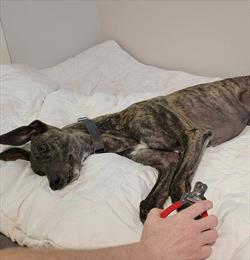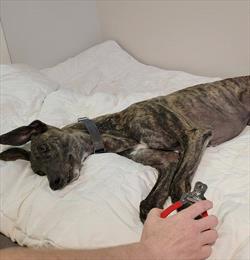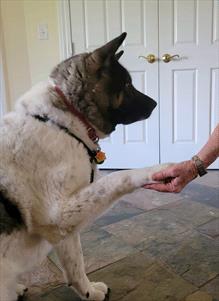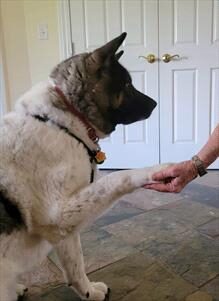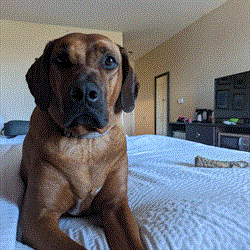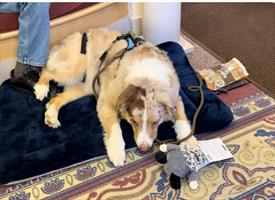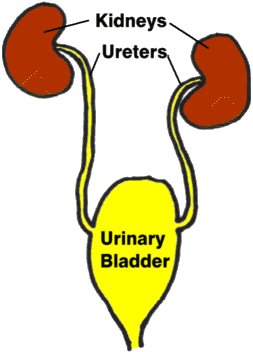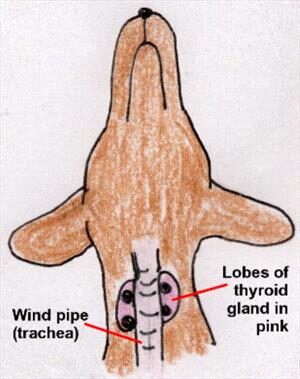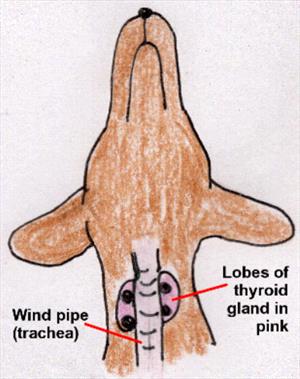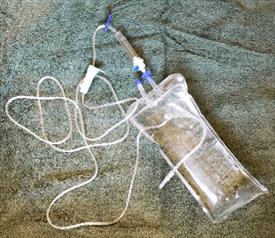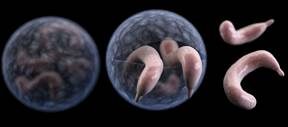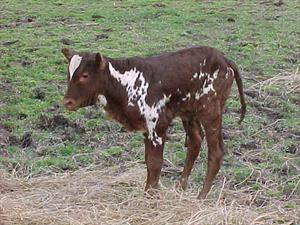An Overview
Cannabis generally refers to the products of the Cannabis sativa plant, commonly known as marijuana. The Cannabis sativa plant uniquely has over 100 different chemicals called phytocannabinoids. (Phyto means plant.) The most well-known of these is delta 9-tetrahydrocannabinol, referred to as THC.
THC has psychoactive effects on the brain, making it popular for recreational use. Psychoactive substances affect the mind or behavior and work on the nervous system, altering mood and feeling and making marijuana popular for recreational use. However, because THC affects many other body systems, it also has many medical uses. In fact, marijuana has been safely used medically for centuries.
In the United States, the Drug Enforcement Agency (DEA) has classified THC as a Schedule 1 drug. Schedule 1 drugs have no currently accepted medical use and a high potential for abuse. Despite this classification, almost all states have legalized marijuana for either recreational or medical use.
Another cannabinoid found in the Cannabis sativa plant, called cannabidiol (CBD), is also popular, but because it does not have psychoactive effects, its popularity is primarily because of medical benefits.
Marijuana contains at least 1% THC, although this percentage depends on what part of the plant is used and how it is processed. Products made from marijuana seeds contain little or no THC, but products made from the plant’s buds or flowers can contain up to 10% THC. In recent years, selective plant breeding has produced levels of THC up to 50%.
The United States government has legalized a different Cannabis sativa plant called industrial hemp. Hemp can contain no more than 0.3% THC, but it can contain larger amounts of a second phytocannabinoid, cannabidiol or CBD. Because it contains little THC, the DEA does not control hemp or its products, and they are not considered illegal by the federal government. Because it is not illegal, many dietary supplements containing CBD are now being marketed for medical use in animals.
How It Works
The phytocannabinoids THC and CBD in Cannabis sativa work through the body’s natural endocannabinoid system (ECS). (Endo means self.) The chemicals in the ECS interact with the cannabinoid receptors found throughout the body, helping to regulate physiologic functions, and may be involved in different diseases. Using drugs to influence this system may help in the treatment of disease.
The medical effects of THC and CBD differ because they interact differently with the endocannabinoid system.
In human medicine, CDB has been used to treat anxiety, improve appetite, relieve nausea, control certain types of seizures, and assist in sleep disorders. In animals, pain associated with osteoarthritis and seizures associated with epilepsy are common uses of CBD.
CBD and Supplements
CBD is not psychoactive like THC but may have medical benefits.
CBD is not a scheduled drug by the DEA and is an added ingredient in dietary supplements sold online, at dispensaries, and available over the counter. THC and CBD are also available by prescription, and your veterinarian may prescribe one or the other for treating your pet, most commonly for pain management.
The difference between supplements and prescription drugs is that unapproved products like supplements are not regulated, nor are they assessed for consistency. Supplement labels may inaccurately list the amount of CBD in the product. More importantly, supplements may contain chemicals such as synthetic cannabinoids that are not listed on the label but may be dangerous to your pet.
In general, marijuana is safe. People are generally exposed to higher amounts of THC than pets because people more commonly smoke, rather than ingest, marijuana. THC that is ingested (for example, marijuana cookies) is removed mainly by the liver before it can get into the blood. THC that is inhaled bypasses the liver, and most of it enters the blood.
Toxicity in THC vs CBD
Because of its psychogenic effects, products containing THC are more likely to cause clinical signs that look like toxicity in dogs or cats. However, in contrast to marijuana or THC, products containing CBD have not been associated with significant toxicity or side effects in dogs. Toxicity or side effects to cannabis most likely reflect the effects of THC rather than CBD but are rarely lethal.
In cases in which side effects were reported with a supplement containing CBD, the supplement also contained THC. Even then, the side effects involved the gastrointestinal tract (vomiting, diarrhea) and were not severe.
An exception is those products that contain synthetic cannabinoids or if other drugs have been unknowingly added. These products can be life-threatening. This is another reason that it is important to bring the actual product to your veterinarian.
Different cannabinoids have varied effects. Each cannabinoid may reach a different area of the body. Responses to CBD among animals may reflect the differences in individual endocannabinoid systems.
Keep any medicinal or recreational products out of the reach of pets and children.
Signs of Marijuana Toxicity in Pets
The legalization of marijuana has led to increased reports of toxicity in dogs and cats. Most pet exposure to marijuana occurs after eating homemade baked goods containing the dried marijuana plant (about 70%), followed by eating the plant itself (about 10%).
For marijuana toxicity to occur, the pet must eat a large amount of marijuana. The amount of marijuana plant necessary to cause death in a dog or cat has not been determined. However, the least amount that has ever been associated with signs of toxicity is 3 to 9 g per kg of animal weight (about 7 to 20 g per lb.). For comparison, the average marijuana cigarette generally contains only about 0.5 to 1 gram of plant material.
A problem with dogs ingesting marijuana in baked goods such as brownies or cookies is that they often contain chocolate, which is also toxic to dogs. Baked products may also contain concentrated forms of marijuana butter or oil. Another possible reason for marijuana toxicity in dogs is that marijuana may contain unsafe, illegal substances such as other drugs or synthetic cannabinoids. In cases where death has been reported in dogs, the marijuana most commonly was in baked goods. Chocolate may contain the sugar substitute xylitol, a substance that is toxic to dogs.
After ingestion, the time it takes for clinical signs to occur and how long it takes for the pet to become normal again depends, in part, on how much marijuana and what else might have been ingested. Clinical signs can appear as early as 30 minutes after exposure but may take up to two hours to occur. After ingestion, pets may become normal again in as little as a couple of hours, but more often, it takes 24 to 72 hours for pets to return to normal.
A common clinical sign of marijuana toxicity is loss of urination control. Because this sign does not occur with other toxins, it helps with the diagnosis.
Other common clinical signs of toxicity include:
- lethargy or depression;
- difficulty walking or standing;
- increased sensitivity to motion, sound, or touch (easily startled); and
- salivating (drooling).
Rarely, the pet may become aggressive. With the most severe toxicity, seizures may occur, or the pet may become comatose. Pets that already have illness may be more likely to become ill. Clinical signs in these pets may depend on what other illnesses they have.
Compared to humans, a dog has many cannabinoid receptors around the brain that help with balance. When dogs ingest a large amount of THC, they may become uncoordinated and unable to stand. This THC side effect in dogs is not likely to occur with CBD or in other species.
Diagnosing marijuana toxicity can be difficult. It is important that your veterinarian be given any information that might help with identifying the cause of the clinical signs. Bringing the actual product your pet was exposed to with you to the clinic can help. There is no risk to you as the pet owner because your veterinarian is not required to report toxicity to local law enforcement.
In humans, urine tests are used to detect chemicals metabolized in urine from THC. However, animals do not make these metabolites, so these types of urine tests are not helpful.
Treatment for Toxicity
Diagnosis and treatment of marijuana toxicity depend on a well-informed veterinarian.
There is no specific antidote for marijuana toxicity. Treatments are given help to control the clinical signs. This might include fluids or drugs to control vomiting and, for severe toxicity, antiseizure medications.
Usually, the patient is sent home after a physical examination. The pet can be kept in a confined space and monitored until the effects wear off. However, more intense in-hospital observation and support are needed if the patient has lost consciousness.
If less than 30 minutes have passed since the Cannabis has been eaten, it may be possible to induce vomiting. However, the pet may inhale stomach contents, particularly if it is acting sedated. This option may be necessary if the pet ingested a life-threatening toxin.
In more severe cases of toxicity, your veterinarian may give activated charcoal orally. This is a liquid that helps to bind ingested toxins. The toxin passes along with the charcoal when the pet defecates. However, this should not be given to patients that are sedated.
Cannabinoids might interact with other medications. For example, they may cause other medications to leave the body more slowly. It is important to notify your veterinarian if your pet is receiving cannabis or any supplement.
The ASPCA National Animal Poison Control is available 24 hours a day at 888-426-4435. Expect an initial consultation fee of around $100.00 and additional follow-up is at no charge. You will be assigned a case number your veterinarian can use to communicate with a toxicology specialist before beginning treatment.
